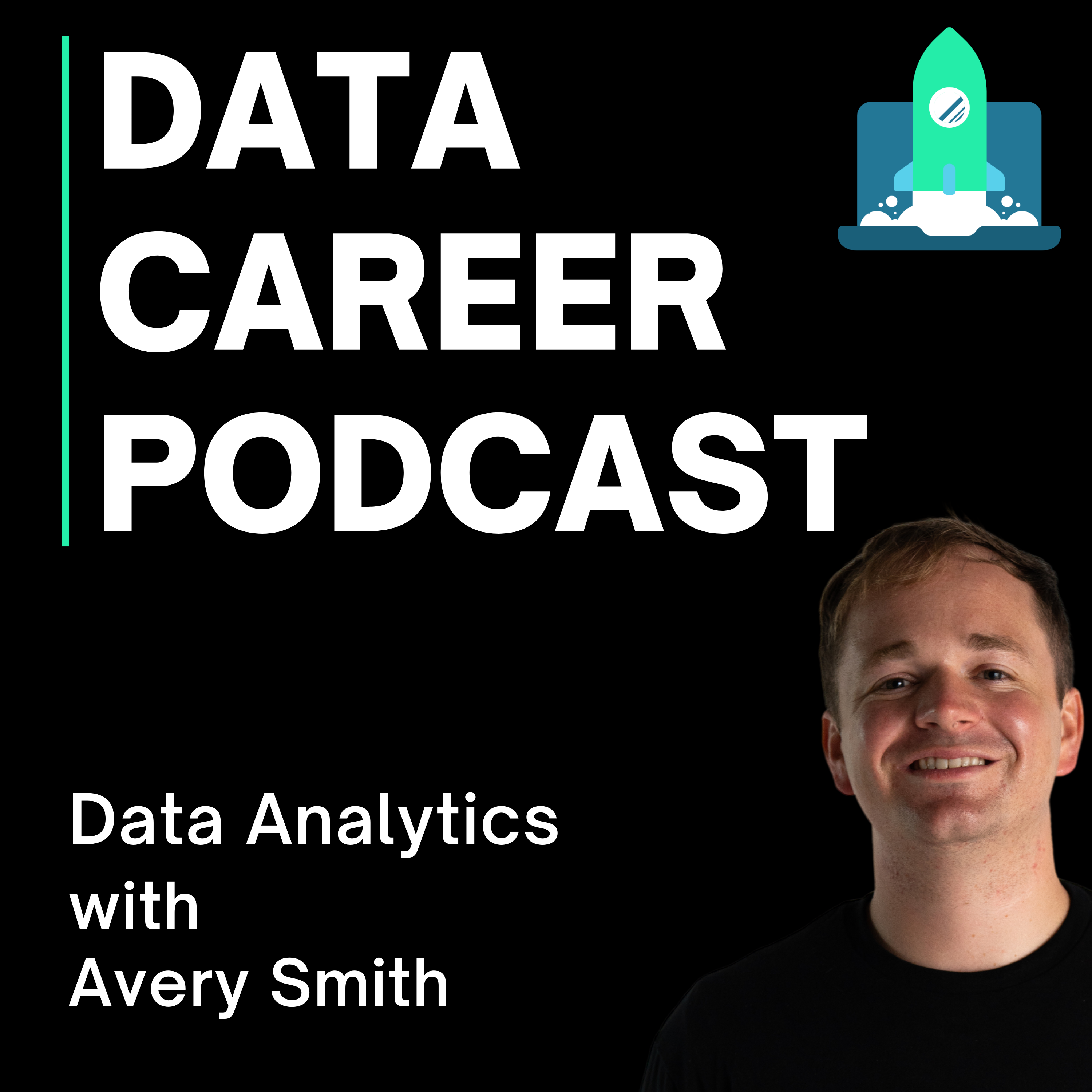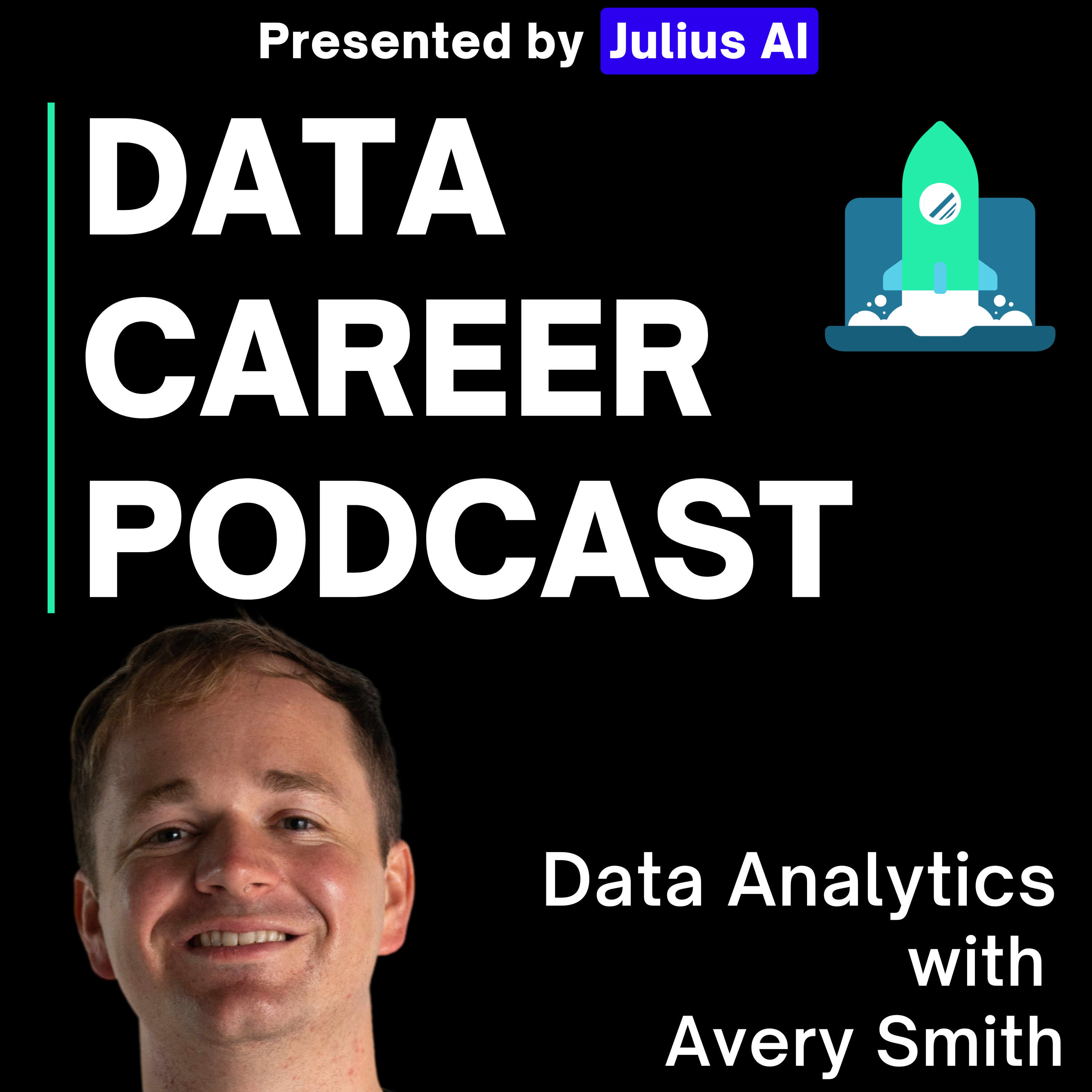186: I analyzed 6,512 data analytics jobs – here’s where you’re most likely to get hired
Help us become the #1 Data Podcast by leaving a rating & review! We are 67 reviews away!
I wouldn't try to become a data analyst next here. Here's 4 reasons why and what I'd do instead.
💌 Join 30k+ aspiring data analysts & get my tips in your inbox weekly 👉 https://www.datacareerjumpstart.com/newsletter
🆘 Feeling stuck in your data journey? Come to my next free "How to Land Your First Data Job" training 👉 https://www.datacareerjumpstart.com/training
👩💻 Want to land a data job in less than 90 days? 👉 https://www.datacareerjumpstart.com/daa
👔 Ace The Interview with Confidence 👉 https://www.datacareerjumpstart.com//interviewsimulator
⌚ TIMESTAMPS
00:00 — Why the data job market is tough
00:36 — Worst states for data analysts
01:55 — Why these states rank low
04:11 — Best states (raw counts) for data analysts
06:08 — Jobs per capita explained
07:10 — Top states after normalization
09:35 — Slope chart breakdown
10:18 — What the normalized rankings mean
👨🎓 Featured Bootcamp Students:
Moiz Noorali: https://www.linkedin.com/in/moiz-noorali/
Ani Mayilyan: https://www.linkedin.com/in/ani-mayilyan/
Mukta Pandey: https://www.linkedin.com/in/muktap2377210/
Amanda Ward: https://www.linkedin.com/in/amandawarddata/
Sebastian Wang: https://www.linkedin.com/in/zitong-wang-b06316284/
📊 Intern with me: https://www.datacareerjumpstart.com/daa
🔗 CONNECT WITH AVERY
🎵 TikTok
💻 Website
Transcript
And trust me, some of these results are going to shock you. So let's go ahead and start with the states. You should probably avoid at all costs and to do this analysis, we are basically looking at where each state is located. In the job description and tallying the number of open data jobs in each respective state.
Now, theoretically, if all things were equal and every state was the exact same and random, each state would have about 2% of the data jobs because there's 50 states and one divided by 50 is 2%. So that will be the reference that we're measuring everything against.
have Alaska at number seven. [:Number four is Delaware. Number three is Wyoming. Number two is Vermont. And the worst place to become a data analyst in the United States is number one, North Dakota.
Now let's talk about these four A moments and why they might be in the bottom. West Virginia does have one.
Now, let's talk about each one of these for a second and to talk about why they might be in the bottom. Starting with West Virginia, there's 1.8 million people living there, but it is kind of like an older state that's really kind of reliant on coal energy. Apparently they're just reading this online.
There's lower education. There's not really a major urban city. In fact, like off the top of my head, I don't know if I could name one city in West Virginia, sorry, West Virginia. Uh, some of the geography might be tough there, like with some of the. Some of the geography might be tough there with mountains.
d data job, there's probably [:So I guess that's why Delaware's in the bottom five. Wyoming, my neighbor here in Utah. Lowest populated state. Not many people living there, like 500,000 people. Uh, there's energy, there's mining, there's a little bit of tourism, but that's pretty much it. Not really ripe for data jobs. Vermont's 600,000 people, not that many.
Very rural, very tourism based. Um, shout out to Cynthia, who you guys might have seen on this channel before. She was one of my accelerator students that I've interviewed who went from being a teacher to a data analyst. Um, and she can tell you it is a. And she actually lives in Vermont and she can tell you that it is a hard place to land a data job.
Uh, and the two data jobs that she's landed since transitioning from a teacher have both been remote. And then number one, North Dakota, 800,000 people live there. It's pretty much farmland and oils and their winters are really harsh, so I can definitely see why that would be the worst place to become a data analyst.
bottom data staters, and I'd [:Now, if those states have the lowest number of data jobs, what states have the highest number of data jobs, let's get into it. But before we do, I should probably tell you that I didn't do this analysis on my own, and I actually had a lot of help from the students inside of my bootcamp, the data analytics accelerator.
They actually are the ones who crunched the numbers and created a lot of these data visualizations that you'll be seeing. In this episode. And that's because I actually give my students inside of the accelerator a chance to intern for me and my company to do real analysis just like this. And it's actually a win-win because I get help analyzing data like this that I can talk about in my episodes.
And the students get the chance to say that they've worked as a data analyst on their resume in LinkedIn. And that's real experience. That looks impressive to hiring managers and recruiters. And that's one of the most important things that you can do when you're trying to land your first data job. You really wanna have some sort of data job on your resume already.
And so this [:and have some good bullet points that they can put underneath that, like created data visualization went through, you know, 6,000 rows of data, so on and so forth. So huge shout outs to our internship project. So huge shout out to our internship team for this project. Moise, Ani Helian, Muk Pandy, Amanda Ward, and Sebastian Wang.
So you should check out all their LinkedIn profiles and their, so. You should check out all of their LinkedIn profiles in the show notes down below, especially if you're hiring, because these are some sharp analysts. And if you want to do an internship with me and my company, well that's one of the benefits you get when you join the accelerator.
And you can learn more about my data bootcamp in the show notes down below. We'd love to have you. We'd love to have you. And who knows, maybe it'll be your face and your name popping up on the next video. We do.
u have Illinois and Florida, [:Number three, New York. Number two, Texas. And number one, drum roll please. It is California.
So why are these the top five? Well, if we go back and we think about Virginia, there is a ton of government contracting there. There's defense, there's government, as well as Amazon's second headquarters are there. So that makes sense. Lots of data jobs there. Next is Washington, and that's where Microsoft and Amazon have their headquarters.
Meta and Google also have huge offices there as well. So there's lots of, so it's a huge tech hub and there's lots of data jobs available. New York? Well, I mean it's the finance capital of the world. This is gonna be Wall Street, hedge funds, FinTech. A lot of big companies have offices in New York, so this totally makes sense.
ally where I used to live. I [:So it's only getting more and more popular for jobs. Lastly, there's California. It's huge. 40 million people, three really big cities. Los Angeles, San Francisco, San Diego, tons of tech startups. Lots of like the big companies have their headquarters here, Google, meta, apple, Netflix, like there's a ton of data jobs here.
It makes sense. This is number one.
Now looking at these top five states, you might be thinking, well, duh, of course California and Texas have the most jobs. That makes a lot of sense because they have the most people, and you'd be exactly right. I'm not gonna argue with you on that. These are massive states with huge populations, and it's not really fair to compare a state like.
r which states are easier to [:But let me ask you this, would you rather compete for 500 job openings with 5 million competitors or five job openings for 10 people? It's the latter, right? And that's what we do as data nerds. We need to factor in the population and look at the jobs per capita. So how many data analysts opportunities exist per 1 million residents of the state?
And that's actually gonna be a much better. And that's actually gonna be a much better metric because that shows us, which states have a lot of job openings, even though it might have a lot of people, and which states are maybe prioritizing data roles relative to their size. And so when we do this normalization for the populations, the rankings kind of completely.
our West, Virginia at three, [:Data analyst, North Dakota. And what about the best states to become a data analyst after normalizing? Well, Georgia and Rhode Island are at six and seven. Then we hop into newcomer Massachusetts at five. New York remains at number four. We have New York, which remains in the top five. Number three is Virginia.
Number two is Washington. And number one, you'll never guess. I promise you won't guess. Like literally try to guess you're not gonna get it right. Number one place to be a data analyst in the United States is the District of Columbia. So let's talk about this.
ion of District of Columbia, [:They probably live around the area like Maryland or Virginia, but it's hard to actually do that analysis. Hard to know.
It is worth. It is worth noting that Virginia came in at three, which would kind of take in some of this DC job ideas. So this is a great place to live if you're trying to land a data job. Washington State, very awesome. Lots of data jobs over there. Obviously New York just full of jobs and uh, and Massachusetts coming in at five.
Well, there's really a lot of good colleges there. Harvard, MIT, UMass, all that stuff. And there's a biotech pharma hub up there, so they're hiring a lot of data people up there and there's lots of good jobs available.
Now, you may have noticed that we lost Texas in California in the top five, and it's probably because they have such huge populations. But I'm curious if you notice any other significant drops or increases when we normalize by population.
the rankings change when you [:They're amazing and they're fantastic for this use case. When you're showing changes as like a before and an after, it makes it super easy to see all the differences. So the left hand side is the state rankings when just comparing the raw total job counts without factoring in population at all. And the right is the rankings when you've already done the normalization and you're comparing with that normalized data.
The highest rankings are at the top and the lowest rankings are at the bottom, and I color coded it by the change in the rankings. So the most positive changes, those are gonna be the dark blue. And the biggest negative drops are gonna be kind of that dark orange color. So if you're watching on video, hit pause and let me know what stands out to you in the comments.
ter as I send these types of [:So you can subscribe at Data Career Jumps or.com/newsletter, or you can find the link in the description of the episode.
So now you know the best and the worst days to try to land a data analyst role, and you still should know what skills to learn and the right steps to actually landing that data job. So I've created another episode for you to watch that will basically explain all that. If you're on YouTube, you can click right here.
Or if you're listening to the audio, I'll have a link in the show notes down below. Good luck and may the odds be ever in your favor.


